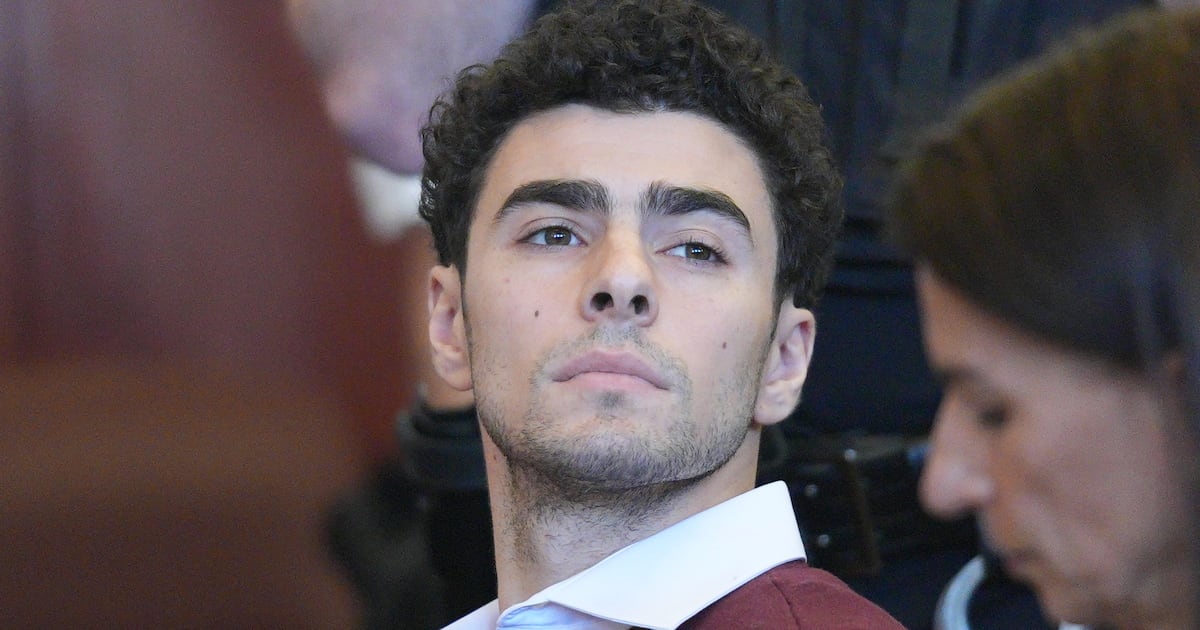Former Minneapolis police officer Derek Chauvin did not follow police policy when he held his knee on George Floyd’s neck for over nine minutes during a May arrest, his former peers have testified in his murder trial.
Over the last two days, two current and former Minneapolis police officials have slammed Chauvin’s decision to use a restraint position that they said was not only against police training and wrong—but “totally unnecessary” after Floyd had stopped resisting.
Lt. Richard Zimmerman, the longest-serving officer in the Minneapolis Police Department, testified on Friday that officers have never been trained to kneel on a person’s neck while they are handcuffed.
“If you kneel on a person’s neck, that can kill them,” Zimmerman told jurors in Hennepin County court. “That person is yours. His safety is your responsibility.”
Chauvin, 45, is on trial for second-degree and third-degree murder as well as second-degree manslaughter after holding his knee on Floyd’s neck during an arrest over a counterfeit bill. Three other officers—Tou Thao, Thomas K. Lane, and J. Alexander Kueng—have pleaded not guilty to aiding and abetting second-degree murder while committing a felony, as well as aiding and abetting second-degree manslaughter with culpable negligence.
Chauvin’s defense lawyer, Eric Nelson, has argued that Floyd’s death was the result of health issues and drugs—and that his client was simply doing what “he was trained to do throughout his 19-year career.”
But Chavuin’s former peers who were involved in the aftermath of Floyd’s arrest disagreed with that assessment, stating that they would never use the kind of force used on May 25—and captured in a video that was shared around the world.
“Totally unnecessary. First of all, pulling him down to the ground face down and putting your knee on a neck for that amount of time is just uncalled for,” Zimmerman said when asked about the videos of the incident. “I saw no reason why the officers felt they were in danger. And that’s what they would have to feel to be able to use that kind of force.”
Several bystanders testified earlier this week that during the arrest they repeatedly asked Chauvin to remove his knee and to check Floyd’s pulse. Among the group were an off-duty Minneapolis firefighter and EMT, who was ignored when she repeatedly offered her assistance, and an MMA fighter who tried to explain that Chauvin’s chokehold was cutting off Floyd’s circulation. Several teenagers said they begged the officers to stop as Floyd was “gasping for air.”
When paramedics finally arrived at the scene, Chauvin had to be instructed to get off Floyd. Prosecutors state that when Floyd was loaded into the ambulance, he had no pulse.
Zimmerman, who has been with the department since 1985, said that officers are trained to turn people on their side or have them sit up after handcuffing them. He added that the training also notes that having a person handcuffed and lying on their stomach might make it difficult to breathe and is considered a “deadly force.”
“You need to get them off their chest,” he added. “If you’re lying on your chest, that’s constricting your breathing even more.”
During cross-examination, Zimmerman admitted that the department’s training does allow officers to put a knee on a shoulder and bottom of the neck during handcuffing. After that, he insisted, it is unnecessary.
When asked if people can be dangerous after they are in handcuffs, Zimmerman stressed: “The threat level goes down all the way. They’re cuffed; how can they really hurt you?”
“If they become less combative, you may just have him sit down on the curb. The idea is to calm the person down, and if they are not a threat to you at that point, you try to help them so that they’re not as upset as they may have been in the beginning,” he later added.
On Thursday, retired Sgt. David Pleoger, a former shift supervisor with the Minneapolis Police Department who received a call about Floyd’s arrest from a concerned 911 dispatcher, also said that Chauvin’s use-of-force went too far.
“When Mr. Floyd was no longer offering up any resistance to the officers, they could've ended the restraint,” Pleoger said.
Pleoger revealed to jurors that Chauvin did not immediately admit to him that he’d placed his knee on Floyd's neck during the arrest. He said it was not until they were at Hennepin County hospital, where Floyd had been taken, that Chauvin admitted doing it—although he did not say for how long.
“I believe he told me that they had tried to put Mr. Floyd... into the car. He had become combative,” Pleoger said. “I think he mentioned that he had injured—either his nose or his mouth, a bloody lip, I think, and eventually after struggling with him, he suffered a medical emergency and an ambulance was called and they headed out of the scene.”
He added that, per department policy, Minneapolis police officers are trained to roll people on their side “so they can breathe easier” after they have been restrained in the prone position.
Minneapolis Police Sgt. Jon Edwards also testified against Chauvin on Friday, though his testimony was focused on how he secured the scene after he was alerted by Pleoger that Floyd “may or may not live.”
The Hennepin County Medical Examiner concluded Floyd died of cardiac arrest from the restraint and neck compression, also noting that Floyd had heart disease and fentanyl in his system. An independent report commissioned by Floyd’s family, which will not be shown at trial, concluded that he died of strangulation from the pressure to his back and neck. Both reports determined Floyd’s death was a homicide.









